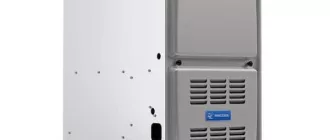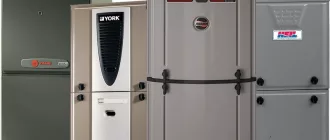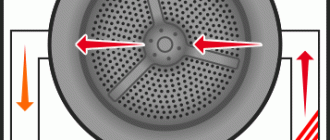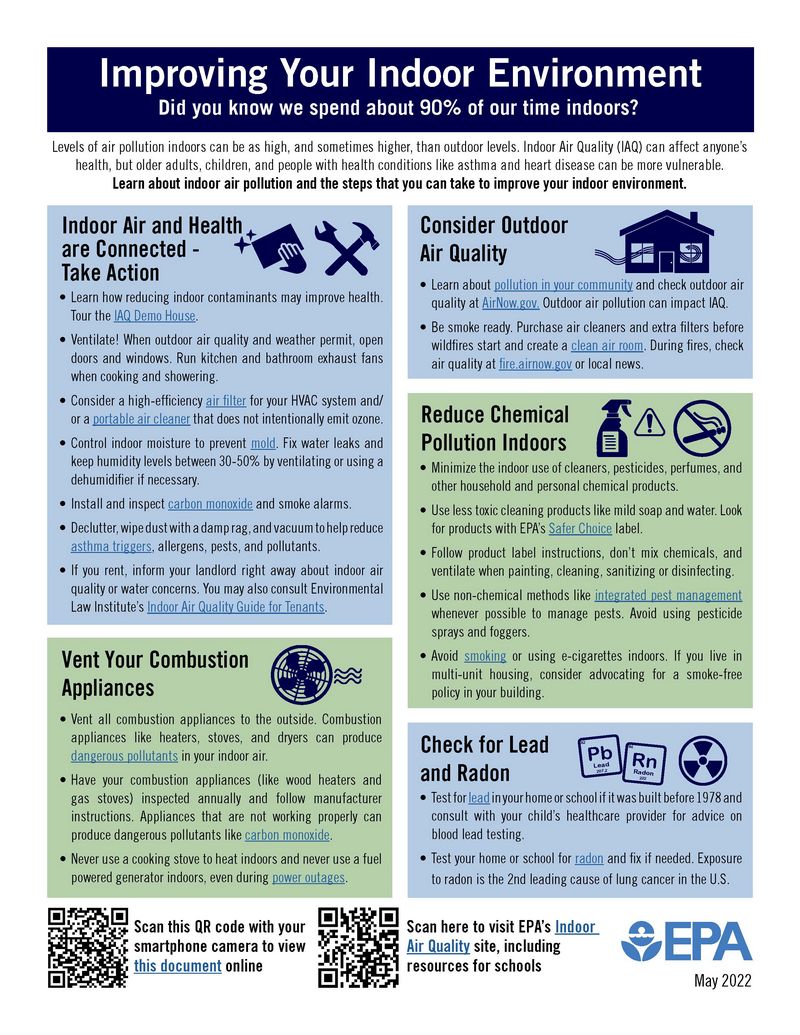
How to Improve Your Indoor Air Quality, Allergy and Asthma Edition
Indoor air quality is of utmost importance, especially for individuals suffering from allergies and asthma. It is essential to create a healthy living environment that promotes clean and fresh air. This edition will explore five effective ways to improve indoor air quality and alleviate allergy and asthma symptoms.
Allergies can be triggered by various factors, including dust, pet dander, pollen, and mold. People with asthma are susceptible to inflammation and airway constriction when exposed to allergens. The first step to combating allergies and asthma is understanding the sources of indoor air pollution.
Improving indoor air quality can have significant benefits for allergy and asthma sufferers. One effective way to achieve this is by regularly cleaning and vacuuming the house to remove dust and pet dander. It is also crucial to keep windows closed during high pollen seasons and use air purifiers to filter out irritants.
Asthma symptoms can be alleviated by maintaining a clean and allergen-free environment. Regularly washing bedding in hot water, using hypoallergenic covers for mattresses and pillows, and keeping humidity levels low can help minimize allergens and reduce asthma triggers.
In addition to cleaning and filtration, proper ventilation is essential for improving indoor air quality. Adequate ventilation helps remove stale air and replace it with fresh outdoor air, reducing the concentration of allergens and pollutants. It is recommended to open windows and doors when weather permits and use exhaust fans in kitchens and bathrooms to enhance air circulation.
In conclusion, enhancing indoor air quality can significantly improve the well-being of allergy and asthma sufferers. By understanding common allergens, maintaining a clean environment, using air purifiers and filters, and ensuring proper ventilation, individuals can create a healthier indoor living space and alleviate their allergy and asthma symptoms.
Use High-Quality Air Filters
If you suffer from asthma or allergies, it’s important to invest in high-quality air filters for your indoor space. These filters can greatly improve the air quality in your home and alleviate your allergy and asthma symptoms.
High-quality air filters are designed to capture a wide range of airborne allergens, such as dust, pollen, pet dander, mold spores, and other irritants. They work by trapping these particles and preventing them from circulating in the air you breathe.
When choosing air filters, look for those labeled with a high MERV (Minimum Efficiency Reporting Value) rating. The higher the MERV rating, the better the filter is at capturing small particles. Filters with a MERV rating between 8 and 13 are typically recommended for allergy and asthma sufferers.
Regularly replacing your air filters is also essential to maintain their effectiveness. Follow the manufacturer’s instructions for replacement, as filters should typically be changed every three to six months. By doing so, you can ensure that the air in your home remains clean and free from allergens.
Using high-quality air filters is just one way to improve the indoor air quality and create a healthier environment for those with allergies and asthma. Combine it with other strategies, such as regular cleaning, maintaining proper humidity levels, and keeping windows closed during pollen season, to further reduce the allergens in your home.
By taking these steps, you can breathe easier and enjoy a better quality of life, regardless of your allergy or asthma symptoms.
Regularly Clean and Vacuum
Cleaning and vacuuming your indoor space on a regular basis is essential for maintaining good indoor air quality and reducing allergy and asthma symptoms. Dust, pollen, pet dander, and other allergens can accumulate and circulate in the air, which can trigger allergies and asthma attacks. By regularly cleaning and vacuuming, you can remove these allergens and improve the air quality in your indoor environment.
Make sure to dust and wipe down surfaces such as furniture, countertops, and shelves. Use a damp cloth or microfiber cloth to trap dust instead of just spreading it around. Vacuum carpets, rugs, and upholstery to remove dust, pollen, and pet dander. Consider using a vacuum cleaner with a HEPA filter, which can trap smaller particles and prevent them from being released back into the air.
In addition to cleaning and vacuuming, it’s also important to regularly wash bedding, curtains, and other fabric items that can accumulate dust and allergens. Use hot water and an allergy-friendly detergent to kill dust mites and remove allergens.
By regularly cleaning and vacuuming, you can significantly reduce the presence of allergens in your indoor space and improve the quality of the air you breathe. This can help alleviate allergy and asthma symptoms and create a healthier environment for you and your family.
Control Humidity Levels
High humidity levels can worsen asthma and allergy symptoms, as they can create an ideal breeding ground for dust mites, mold, and other indoor allergens. To improve the air quality in your indoor space and alleviate asthma and allergy symptoms, it is important to maintain optimal humidity levels.
An effective way to control humidity levels is by using a dehumidifier. This appliance can help remove excess moisture from the air, preventing the growth of mold and reducing the presence of dust mites. It is recommended to keep humidity levels between 30% and 50%.
In addition to using a dehumidifier, it is important to address any moisture sources in your home. Fixing leaky pipes, improving ventilation, and using exhaust fans in bathrooms can help reduce humidity levels.
Monitoring humidity levels regularly is also essential. You can use a hygrometer, which is a device that measures humidity, to keep track of the moisture levels in your indoor space. By maintaining optimal humidity levels, you can create a healthier and more comfortable environment for yourself and reduce asthma and allergy symptoms.
Avoid Smoking Indoors
Smoking indoors can have a detrimental effect on indoor air quality and exacerbate allergy and asthma symptoms. The smoke from cigarettes contains harmful chemicals and particles that can linger in the air for long periods of time. Breathing in secondhand smoke can trigger asthma attacks and cause respiratory irritation in those with allergies.
To maintain a healthy indoor environment, it is essential to avoid smoking indoors. If you or someone in your household smokes, it is important to designate an outdoor smoking area away from windows and doors. This will help prevent smoke from entering the indoor space and contaminating the air.
Additionally, if you live in an apartment building or condominium, be considerate of your neighbors and refrain from smoking in common areas or near ventilation systems. Not only does smoking indoors pose a health risk, but it can also cause unpleasant odors and leave stains on walls and furniture.
By avoiding smoking indoors, you can significantly improve indoor air quality and reduce the risk of triggering asthma and allergies. Creating a smoke-free environment is crucial for maintaining a healthy home and protecting the respiratory health of yourself and your family members.
Remove Carpeting and Upholstered Furniture
To improve the indoor air quality in your home and alleviate allergy and asthma symptoms, consider removing carpeting and upholstered furniture. These items can harbor dust mites, pet dander, pollen, and other allergens, which can trigger allergies and asthma attacks.
Carpeting is especially problematic as it can trap allergens deep within its fibers. Regular vacuuming may not be enough to fully remove these allergens, leading to ongoing exposure. If possible, replace carpeting with hard flooring, such as wood or tile, which is easier to clean and less likely to hold onto allergens.
Similarly, upholstered furniture can also accumulate allergens over time. Dust mites, pet allergens, and pollen can cling to the fabric and cushions, causing continual exposure. Consider replacing upholstered furniture with leather or vinyl alternatives, which are less likely to attract and trap allergens.
Once you have removed carpeting and upholstered furniture, be sure to clean and vacuum the remaining surfaces regularly. Use a vacuum cleaner with a HEPA filter, which can trap small particles and allergens more effectively. Additionally, consider using allergen-proof covers on mattresses, pillows, and cushions to further reduce exposure to allergens.
By taking these steps to remove carpeting and upholstered furniture from your home, you can significantly improve the indoor air quality and reduce allergen exposure. This can lead to a healthier living environment and help alleviate allergy and asthma symptoms.
Keep Pets Clean and Groomed
If you suffer from allergies or asthma, keeping your pets clean and groomed is essential to maintaining good indoor air quality and minimizing symptoms. Pet dander, which consists of tiny flecks of skin shed by animals, is a common allergen that can trigger allergic reactions and asthma attacks.
To reduce the amount of pet dander in your home, make sure to regularly bathe and brush your pets. This will help remove loose hair and dead skin cells that can contribute to indoor air pollution. Use a pet shampoo that is specifically formulated to reduce allergens, and consider using an air purifier designed to capture pet dander particles.
Additionally, it’s important to keep your pets’ bedding clean. Wash their blankets, beds, and toys regularly in hot water to eliminate allergens. Vacuuming your home frequently can also help remove pet hair and dander from carpets and upholstery.
While it may be difficult to resist snuggling up with your furry friends, keeping them out of your bedroom can help minimize your exposure to pet allergens while you sleep. This can lead to better sleep quality and fewer allergy and asthma symptoms in the morning.
Remember, even if you are not allergic to pets, it’s still important to maintain their cleanliness for the benefit of those who may visit your home. By keeping your pets clean and groomed, you can improve the overall air quality in your indoor environment and promote a healthier living space for everyone.
Use Natural Cleaning Products
Asthma and allergies can be triggered by harsh chemicals found in many common household cleaning products. These chemicals can irritate the respiratory system and worsen symptoms.
Using natural cleaning products is an effective way to reduce the risk of triggering asthma and allergies while improving indoor air quality. Natural cleaning products are formulated with non-toxic ingredients, such as plant-based oils and essential oils, which are gentle on the respiratory system.
Here are some natural cleaning products that can help improve indoor air quality:
| All-purpose cleaner | A plant-based cleaner that can be used on various surfaces without emitting harmful fumes. |
| Window cleaner | A non-toxic cleaner that effectively removes dirt and grime from windows without causing respiratory irritation. |
| Floor cleaner | A natural cleaner that is safe to use on different types of flooring and does not release harmful chemicals into the air. |
| Laundry detergent | A gentle detergent made from natural ingredients that cleans clothes effectively without causing skin and respiratory allergies. |
| Dish soap | A natural dish soap that effectively removes grease and grime without irritating the respiratory system. |
By using natural cleaning products, you can create a healthier indoor environment that is free from harsh chemicals. This can greatly alleviate asthma and allergy symptoms while improving the overall indoor air quality.
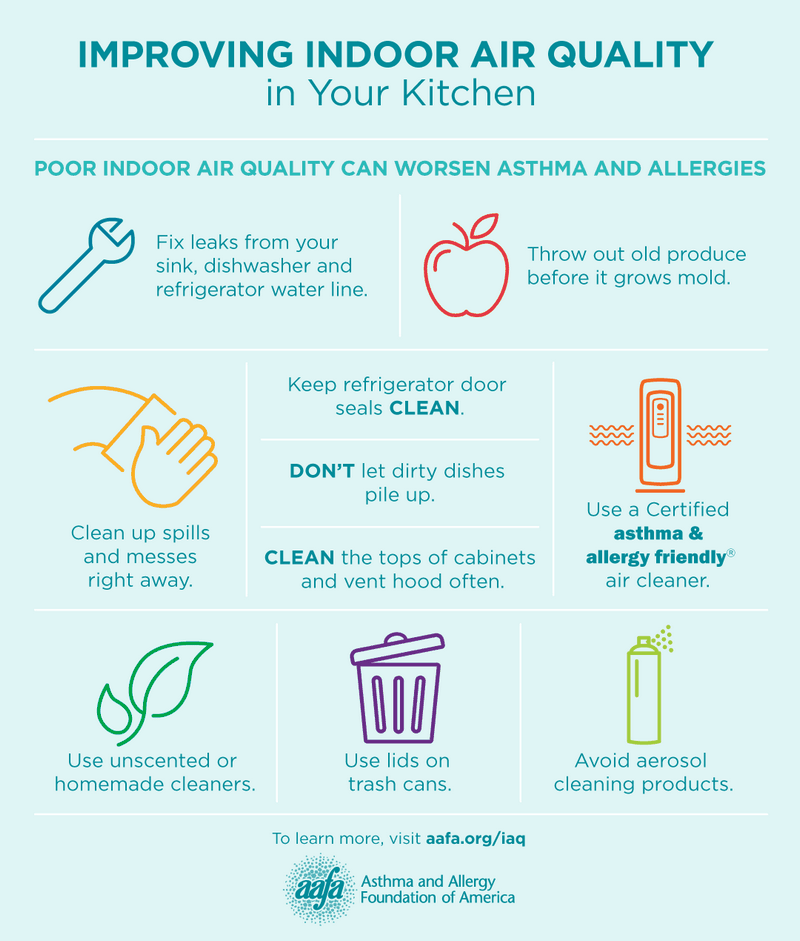
Install an Air Purifier
If you suffer from indoor allergies or asthma, installing an air purifier can greatly improve the air quality in your home or office. Air purifiers are designed to remove allergens and other pollutants from the air, helping to alleviate symptoms and create a healthy breathing environment.
An air purifier works by using filters to capture and trap airborne particles such as dust, pet dander, pollen, and mold spores. Some purifiers also use UV-C light technology to kill bacteria and viruses. By removing these irritants from the air, an air purifier can significantly reduce allergy and asthma symptoms.
When choosing an air purifier, it’s important to consider the size of the room or space where it will be used. Look for a purifier that has a high CADR (Clean Air Delivery Rate) to ensure that it can effectively clean the air in the given area. Additionally, choose a purifier with a HEPA (High-Efficiency Particulate Air) filter, as this type of filter is proven to be the most effective at capturing small particles.
Installing an air purifier in your home or office is a simple and effective way to improve indoor air quality. It can provide relief for allergy and asthma sufferers, allowing them to breathe easier and enjoy their surroundings without the constant worry of irritants in the air. Make sure to regularly clean and replace the filters in your air purifier to maintain its effectiveness and ensure the best air quality possible.
Key features:
- Removes allergens and pollutants from the air
- Reduces allergy and asthma symptoms
- Uses filters and UV-C light technology
- Consider room size and CADR when choosing
- Opt for a HEPA filter for maximum effectiveness
Investing in an air purifier is an important step towards creating a healthier indoor environment. By installing one, you can significantly improve the air quality in your home or office and alleviate allergy and asthma symptoms. Breathe easier and enjoy a cleaner and fresher indoor air with the help of an air purifier.
Increase Ventilation
To improve indoor air quality and alleviate allergy and asthma symptoms, increasing ventilation is key. Proper ventilation helps to remove pollutants and allergens from the air, allowing for fresh air to circulate throughout the space.
Asthma and allergy sufferers often find relief in spaces with good ventilation. By allowing fresh air to enter and stale air to exit, the risk of irritants and allergens accumulating is reduced. This can greatly improve respiratory health and lessen symptoms.
There are several ways to increase ventilation in indoor spaces. Opening windows and doors when weather permits is a simple and effective method. It allows for the exchange of indoor and outdoor air, reducing the concentration of indoor pollutants.
Another option for improving ventilation is using exhaust fans in areas such as kitchens and bathrooms. These fans help remove moisture and odors, as well as any airborne allergens or pollutants that may be present.
Additionally, using air purifiers or filtration systems can help enhance the indoor air quality, especially in areas where opening windows may not be possible, such as in highly polluted urban environments.
It is important to note that improving ventilation alone may not be sufficient to alleviate severe allergy or asthma symptoms. Consulting with a healthcare professional is always recommended, as they can provide tailored advice and treatment options.
Keep Windows and Doors Closed
One simple and effective way to improve indoor air quality and alleviate allergy and asthma symptoms is to keep your windows and doors closed. This helps to prevent outdoor pollutants, such as pollen, dust, and pollutants, from entering your home and exacerbating your allergies or asthma.
Pollen, in particular, is a common allergen that can cause a variety of symptoms, including sneezing, itching, and congestion. By keeping your windows and doors closed, you can reduce the amount of pollen that enters your home and reduce your exposure to this allergen.
Dust is another indoor pollutant that can worsen allergies and asthma symptoms. By keeping your windows and doors closed, you can minimize the amount of dust that enters your home, which can help to alleviate symptoms such as coughing, wheezing, and shortness of breath.
Additionally, keeping your windows and doors closed can help to prevent outdoor air pollution from entering your home. Outdoor air pollution, such as vehicle emissions and industrial pollutants, can have a negative impact on indoor air quality and can trigger or worsen asthma symptoms.
In conclusion, keeping your windows and doors closed is a simple and effective way to improve indoor air quality and alleviate allergy and asthma symptoms. By preventing outdoor pollutants from entering your home, you can reduce your exposure to allergens and irritants, leading to improved respiratory health.
Maintain a Dust-Free Environment
Dust can be a major trigger for asthma and allergies, so it’s important to keep indoor spaces as dust-free as possible. Here are some tips to improve the air quality and reduce dust in your home:
| 1. Clean Regularly: | Regularly dust and vacuum your home to remove dust particles. Use a damp cloth or microfiber cloth to trap the dust instead of spreading it around. |
| 2. Avoid Clutter: | Cluttered spaces can accumulate dust easily. Minimize the number of decorative items and knick-knacks in your home to reduce dust buildup. |
| 3. Use Dust-Proof Covers: | Encase pillows, mattresses, and box springs in dust-proof covers to prevent dust mites from accumulating. |
| 4. Wash Bedding Regularly: | Wash your bedding, including sheets, pillowcases, and blankets, in hot water once a week to kill any dust mites or allergens present. |
| 5. Opt for Hard Flooring: | Remove carpets, which can harbor dust and allergens, and replace them with hard flooring like hardwood, laminate, or tile. |
By following these tips, you can create a cleaner and healthier environment for those with allergies and asthma.
Eliminate Mold and Mildew
Indoor air quality is essential for overall health, especially for individuals with asthma or allergies. Mold and mildew can significantly affect air quality and exacerbate asthma and allergy symptoms. Here are some effective ways to eliminate mold and mildew and improve indoor air quality:
- Identify and address sources of moisture: Mold and mildew thrive in damp environments. Identify and fix any sources of moisture, such as leaks or condensation, to prevent their growth.
- Keep humidity levels low: Maintaining humidity levels between 30% and 50% can help prevent mold and mildew growth. Use dehumidifiers in areas prone to excessive moisture, such as basements or bathrooms.
- Clean and dry affected areas: If you notice any signs of mold or mildew, clean and dry the affected areas immediately. Use a mixture of water and detergent or vinegar to remove visible mold, and ensure that the area is thoroughly dried to discourage further growth.
- Improve ventilation: Good airflow can help control moisture levels and prevent mold growth. Ensure that your home is well-ventilated by opening windows, using exhaust fans in bathrooms and kitchens, and installing a whole-house ventilation system if needed.
- Regularly clean and maintain HVAC systems: Mold and mildew can accumulate in your heating, ventilation, and air conditioning (HVAC) system. Regularly clean and maintain your HVAC system to prevent the distribution of mold spores throughout your home.
By following these steps, you can effectively eliminate mold and mildew, improve indoor air quality, and alleviate asthma and allergy symptoms.
Regularly Replace Bedding and Pillows
One of the most effective ways to improve indoor air quality and alleviate allergy and asthma symptoms is to regularly replace bedding and pillows. Over time, bedding and pillows can accumulate dust mites, pollen, pet dander, and other allergens that can trigger allergic reactions and exacerbate asthma symptoms.
It is recommended to replace pillows every 1-2 years, as they can become breeding grounds for dust mites and mold. Opt for hypoallergenic pillows that are specifically designed to resist allergens and provide proper support for your head and neck.
As for bedding, it is recommended to wash sheets, pillowcases, and blankets once a week in hot water to kill any allergens. Additionally, consider investing in allergen-proof mattress and pillow covers to further protect against allergen accumulation.
By regularly replacing bedding and pillows, you can significantly reduce the presence of allergens in your bedroom and create a cleaner and healthier sleeping environment.
Consult an Allergist or Asthma Specialist
If you suffer from asthma or allergies, it is important to consult with an allergist or asthma specialist. These medical professionals specialize in managing and treating asthma and allergy symptoms. They can help diagnose the specific allergens or triggers causing your symptoms and develop a personalized treatment plan.
An allergist or asthma specialist can perform various tests to identify allergens, such as skin prick tests or blood tests. They can also provide recommendations on improving indoor air quality to minimize exposure to allergens. Additionally, they may prescribe medications or allergy shots to alleviate symptoms and improve overall quality of life.
Regular visits to an allergist or asthma specialist are crucial for staying updated on the latest treatment options and maintaining good control over your symptoms. They can also provide education on managing flare-ups, avoiding triggers, and properly using inhalers or other medications.
Remember, managing asthma and allergies requires a multi-faceted approach, and consulting with an allergist or asthma specialist is an essential part of that. With their expertise and guidance, you can better understand your condition and take proactive steps to improve indoor air quality and alleviate allergy and asthma symptoms.
Q&A:
What are some common indoor allergens?
Some common indoor allergens include dust mites, pet dander, mold spores, and pollen.
How can I reduce dust mites in my home?
To reduce dust mites in your home, regularly wash bedding in hot water, use allergen-proof covers on mattresses and pillows, vacuum regularly, and minimize clutter.
Are air purifiers effective in improving indoor air quality?
Yes, air purifiers can be effective in improving indoor air quality by removing pollutants and allergens from the air.
What steps can I take to minimize pet dander in my home?
To minimize pet dander in your home, keep pets out of bedrooms and other areas where you spend a lot of time, regularly groom your pets, and clean surfaces regularly to remove dander.
Can changing air filters in my home help alleviate allergy and asthma symptoms?
Yes, regularly changing air filters in your home can help alleviate allergy and asthma symptoms by reducing the amount of allergens and pollutants in the air.

